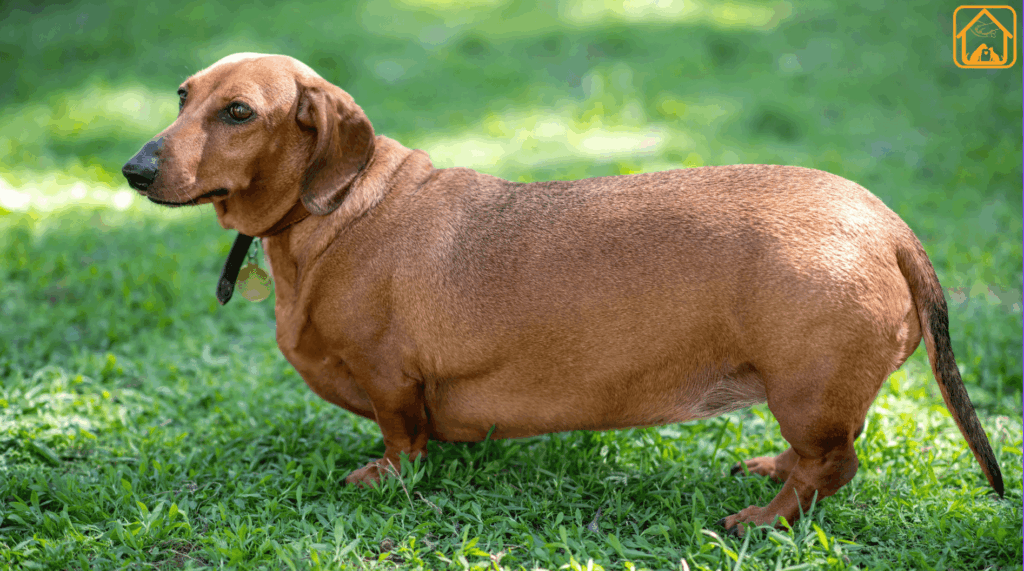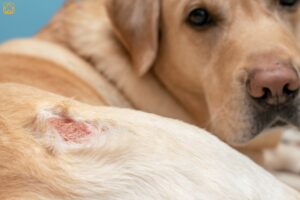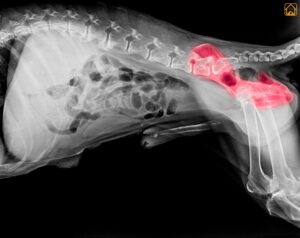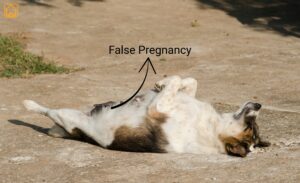Studies show that nearly 60% of dogs in North America are overweight or obese, making this the most common preventable disease in dogs. Obesity in dogs isn’t just about appearance; it can shorten your dog’s life, increase the risk of diseases like diabetes, arthritis, heart disease, and even cancer, and reduce their quality of life.
Let’s dive in and empower you with the knowledge you need to help your dog live their best, healthiest life!
Understanding Canine Obesity: Definitions and Prevalence
Obesity in dogs means more than just a chubby belly. It’s the result of excess body fat that puts extra strain on your dog’s organs, joints, and even their heart. Dogs are considered overweight when they’re 10%-20% over their healthy weight, and obese if it’s above 20%.
Canine obesity isn’t rare; in fact, it’s the most common preventable disease in dogs. Every size, breed, and age is at risk, though some are more prone than others. Experts link this trend to changes in feeding habits, less exercise, and sometimes genetics or medical issues.
Extra fat isn’t just dead weight. It’s actually biologically active, releasing inflammatory hormones and causing oxidative stress. Think of it as an invisible fire that slowly damages tissues and organs. That’s why obesity in dogs is linked to problems like diabetes, arthritis, heart disease, and even certain cancers.
Why Obesity in Dogs Is a Growing Concern?
Obesity in dogs isn’t just making headlines, it’s showing up in more homes every year. Across the country, veterinarians are seeing a steady rise in overweight and obese dogs. Studies report that well over half of all pet dogs are carrying extra weight, with some surveys suggesting up to 65% are now overweight or obese. That’s a lot of pups struggling with health risks their humans might not see.
This is happening due to busy lives, more treats, and less time for walks. The problem is, extra weight doesn’t just slow dogs down; it sets the stage for serious health problems. I remember chatting with a friend who thought their older beagle was just “slowing down with age,” but it turned out her extra pounds were the real culprit.
Causes of Obesity in Dogs
- Overfeeding: Feeding too much food, too many treats, or frequent table scraps can quickly lead to excess calorie intake. Dogs don’t need as many calories as we might think!
- Lack of exercise: Sedentary lifestyles mean fewer calories burned. Dogs that don’t get daily walks or playtime are at higher risk.
- Free-choice feeding: Leaving food out all day (instead of set meal times) encourages grazing and overeating.
- High-calorie diets: Many commercial dog foods and treats are packed with calories. Some diets, like those labeled for ‘active’ or ‘working’ dogs, may be too rich for couch-potato pups.
- Breed predisposition: Some breeds—like Labrador Retrievers, Beagles, Dachshunds, and Pugs—are genetically prone to weight gain or have slower metabolisms.
- Neutering/spaying: After surgery, a dog’s metabolism often slows, and their calorie needs decrease. Failure to adjust portions can result in gradual weight gain.
- Age: Older dogs are less active and need fewer calories than young, energetic pups.
- Owner habits: Inaccurate measuring, giving in to begging, or rewarding with food all contribute. Large bowls or cups can lead to overfeeding without realizing it.
- Social factors: Dogs in multi-pet households may eat more in competition, or single dogs may be ‘spoiled’ with extra treats.
Medical and Other Factors
- Hormonal issues (like hypothyroidism or Cushing’s disease)
- Genetic predisposition (some breeds, like Beagles and Labradors, are more likely to gain weight)
- Age (older dogs move less and may need fewer calories)
- Spaying/neutering (can slightly lower metabolism)
- Certain medications
Even small daily excesses add up. For a medium-sized dog, just 50 extra calories per day can result in a 5-pound weight gain in a year. That’s why portion control, regular exercise, and the right diet are so important.
Common myths like “my dog will self-regulate” or “healthy treats don’t count” often lead to unintentional overfeeding. Remember, even healthy foods like carrots or green beans should be given in moderation, as part of your dog’s daily calorie allowance.
Symptoms and How to Tell if Your Dog Is Obese
Spotting obesity in dogs isn’t always simple. Here are some classic signs:
- Difficulty feeling the ribs: You should be able to feel, but not see, your dog’s ribs easily. If you need to press firmly, there may be excess fat covering them.
- Lack of a waist: Viewed from above, your dog should have a slight hourglass shape behind the ribs. A straight or oval shape can mean extra weight.
- Less defined tuck: From the side, the belly should ‘tuck up’ behind the ribcage. A sagging belly is a red flag.
- Weight gain: Noticeable increase in weight, tighter collar or harness, or needing a larger size.
- Lethargy: Less energy for play or walks, and quick to tire.
- Exercise intolerance: Panting heavily after mild exertion, reluctance to exercise, or trouble jumping or climbing stairs.
- Other symptoms: Excessive snoring, difficulty breathing, or increased joint stiffness.
Here is a quick with the symptoms of a obesity in dogs
| Sign | Healthy Dog | Overweight/Obese Dog |
| Ribs | Easy to feel, slight fat cover | Hard to feel, thick fat layer |
| Waist (above) | Visible hourglass | No waist, broad back |
| Belly (side view) | Belly tucks up | Belly hangs down |
| Collar fit | Consistent | Seems tighter |
| Energy | Playful, active | Sluggish, tires easily |
Ever noticed your dog hesitating before jumping on the couch? Sometimes, weight gain is gradual and easy to miss, especially if you see your dog every day. Regular checks and honest observation are key, don’t let “normal for him” become “overweight and unhealthy.”
Health Risks of Obesity in Dogs (Arthritis, Diabetes, Cancer & More)
Obesity in dogs is much more than an appearance issue. Carrying extra weight puts stress on nearly every organ and system in their body. Some of the biggest health risks include:
- Arthritis and Joint Pain: Extra weight accelerates joint wear and tear, causing pain and mobility issues.
- Diabetes Mellitus: Obese dogs are at higher risk for developing diabetes, especially those with underlying metabolic issues.
- Heart and Respiratory Problems: The heart and lungs work harder, increasing the risk of cardiovascular disease and breathing difficulties.
- Cancer: Studies suggest overweight dogs have an increased risk for several cancers, including mammary tumors.
- Liver and Kidney Disease: Fatty deposits can impact organ function long-term.
- Skin Disorders and Increased Inflammation: Obesity is now recognized as a chronic inflammatory disease, raising the risk of skin infections and delayed healing.
- Shortened Lifespan: Research shows overweight dogs may live up to two years less than their healthy-weight peers.
Honestly, nothing breaks my heart more than seeing a dog’s golden years shortened by something we could’ve easily prevented. They count on us to make the right choices especially when it comes to hidden threats like obesity.
How to Assess Your Dog’s Body Condition Score (BCS)
One of the best ways to check if your dog is at a healthy weight is to use a Body Condition Score (BCS). Many vets use a Body Condition Score (BCS) system, think of it as a doggy BMI. The most common scales are 1-5 (where 3 is ideal) or 1-9 (4–5 is ideal). Ask your vet to show you how it works.
| BCS (1-9 Scale) | Description |
| 1-3 | Underweight: Prominent ribs, spine, hips; little fat |
| 4-5 | Ideal: Ribs easily felt, waist visible, abdominal tuck |
| 6-7 | Overweight: Ribs harder to feel, less waist/tuck |
| 8-9 | Obese: Ribs not palpable, no waist, belly sagging |
If you’re unsure, ask your vet for a hands-on demo. Tracking BCS over time helps you catch weight changes early, before they become a bigger problem.
Prevention of Obesity: Diet, Exercise & Lifestyle Tips
Preventing obesity in dogs is far easier than treating it. The habits you build today can help your furry friend enjoy a longer, healthier life. Here are practical, expert-backed strategies to keep your dog in top shape:
Smart Feeding Habits
- Feed the right amount: Measure meals accurately—don’t “eyeball” portions. Adjust food as your dog ages or if activity levels change.
- Choose appropriate food: Puppies, adults, and seniors have different nutritional needs. Work with your vet to select the best option for your dog’s life stage and breed.
- Limit treats and table scraps: Treats should be less than 10% of daily calories. Substitute high-calorie snacks with healthy alternatives like carrot sticks or green beans.
- Keep a feeding schedule: Offer meals at set times rather than leaving food out all day. Consistent routines curb overeating and reduce begging.
Regular Exercise
- Encourage daily exercise: Daily walks, even short ones, help burn calories and keep joints limber.. Adjust activity to suit age, breed, and health.
- Try fetch, swimming, or gentle play, adjust to your dog’s age and health.
- Consistency is key, so make activity part of your routine.
Healthy Lifestyle Choices
- Regular weigh-ins: Weigh your dog monthly at home or with your vet. Early detection of weight gain helps prevent larger problems down the line.
- Monitor after neutering/spaying: Dogs often need fewer calories after these procedures. Reduce food portions as advised by your vet.
- Educate the family: Make sure everyone in the household knows the dog’s diet plan—no sneaky snacks!
- Choose breed-appropriate diets: Some breeds need extra attention to diet and activity due to genetic tendencies to gain weight.
- Stay alert to changes: If your dog becomes less active, develops health issues, or seems hungrier, check with your veterinarian. Changes in weight can be a sign of underlying problems.
Prevention is a lifelong commitment, but it’s worth it dogs at a healthy weight live longer, happier lives and have fewer medical problems. If you’re unsure where your dog stands, ask your vet for a body condition check at every visit.
For more tips on maintaining a healthy lifestyle and preventing dog obesity, explore dog nutrition article on Petshelter.org.
Treatment Options: Diets and Nutrition for Overweight and Obese Dogs
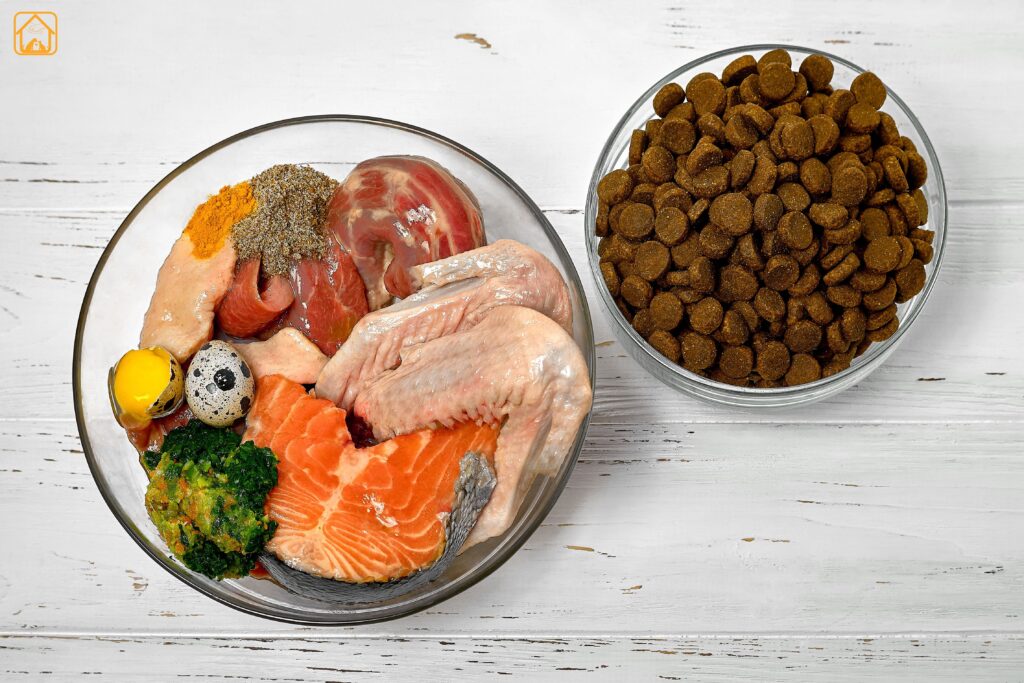
When it comes to managing obesity in dogs, diet is the foundation of a successful weight loss plan. The right nutrition helps your dog shed extra pounds while keeping them satisfied and healthy. But choosing the best diet for overweight dogs can be overwhelming with so many options and opinions.
Key Principles of a Weight Loss Diet
- Calorie control: The most important factor is reducing calorie intake. Your vet will calculate your dog’s ideal weight and daily caloric needs based on age, activity, and health status.
- High protein, moderate fiber: Weight loss diets for dogs are typically higher in protein (to maintain muscle) and fiber (to promote fullness) and lower in fat and calories.
- Balanced nutrition: Avoid simply cutting back on your dog’s regular food, as this can lead to nutritional deficiencies. Instead, use a specifically formulated weight management diet.
Commercial Weight Loss Diets
There are several reputable brands offering veterinary-recommended diets for obese dogs. Look for terms like “weight management,” “light,” or “metabolic support” on packaging. Examples include:
- Royal Canin Satiety Support
- Hill’s Prescription Diet Metabolic
- Purina Pro Plan OM Overweight Management
These diets are designed to deliver all essential nutrients within a lower-calorie formula, often with added fiber to help your dog feel fuller. Your veterinarian can recommend the best choice for your pet’s needs.
Homemade and Fresh Diets
If you prefer homemade diets, always consult a certified veterinary nutritionist. Balancing calories, protein, vitamins, and minerals is complex, and improper recipes may do more harm than good. Never guess portions or ingredients on your own.
Treats and Table Scraps
- Keep treats to less than 10% of total daily calories.
- Choose low-calorie options like plain green beans, carrots, or vet-approved diet treats.
- Avoid table scraps, processed foods, and high-fat snacks.
Pro tip is to set aside a portion of your dog’s daily kibble to use as treats or training rewards this helps maintain consistency.
Portion Control and Feeding Tips
- Weigh or measure food: Use a kitchen scale or proper measuring cup for accuracy. “Heaping” scoops can destroy progress.
- Set meal times: Feed at the same time daily to discourage begging and grazing.
- Multiple small meals: If your dog tends to get hungry, split the daily ration into two or three meals.
If your dog has special needs like diabetes, allergies, or sensitive digestion, work with your vet to find a suitable weight loss food. Some brands that are available in the market will address specific health concerns.
Common Diet Mistakes to Avoid
- Switching foods too quickly (can cause digestive upset, transition gradually over 7 days).
- Ignoring hidden calories from treats, chews, or shared “people food.”
- Feeding puppy food to adult dogs (too calorie-dense!).
I remember when I switched my Labrador, Bunny, from home-cooked meals to diet food too quickly. It turned into a rough month, she had digestive issues, gastric, and even started vomiting white foam. Looking back, I should have spoken to a vet first. Thankfully, I changed my approach and within a week, she was back to her happy, healthy self.
The goal is steady, safe weight loss, aim for 1-2% of body weight per week, with regular check-ins at your vet to track progress.
Special Considerations: Genetics, Breeds Prone to Obesity, and Medical Causes
Some breeds are more likely to gain weight, Labrador Retrievers, Beagles, Dachshunds, Pugs, and Boxers top the list. Genetics can play a role, as can age and whether your dog has been spayed or neutered. Certain medical conditions, like hypothyroidism or Cushing’s disease, may also cause rapid weight gain, so it’s important to rule these out with your vet.
If you’ve ever thought, “My Beagle is overweight no matter what I do,” you’re not alone. Sometimes, even the best efforts need tweaking with professional help.
FAQs about Obesity in Dogs
How do I know if my dog is overweight or obese?
Check their ribs and waist, if you can’t easily feel ribs or see a waist from above, your dog may be overweight. Ask your vet for a formal body condition score.
What is the biggest health risk of obesity in dogs?
The most immediate risks are arthritis and diabetes, but obesity also increases the chances of heart disease, cancer, and a shorter lifespan.
Are some dog breeds more prone to obesity?
Yes, breeds like Labradors, Beagles, Dachshunds, Pugs, and Boxers have a higher genetic risk. They may need extra attention to diet and exercise.
Can obesity in dogs be caused by a medical problem?
Absolutely. Hormonal diseases like hypothyroidism or Cushing’s disease can cause weight gain. Always consult your vet if your dog gains weight suddenly.
What’s the best diet for an overweight dog?
Veterinary-approved weight loss diets are best, as they’re lower in calories but provide all essential nutrients. Don’t just cut regular food, as this can lead to deficiencies.
How much exercise does my overweight dog need?
Start with short, gentle walks or swimming, aiming for at least 15-30 minutes daily. Gradually increase as your dog’s stamina improves.
Will my dog’s lifespan really be shorter if they’re overweight?
Studies show that overweight dogs may live up to two years less than their healthy peers. It’s a sobering thought, but the good news is, it’s never too late to help your dog get healthier.
Conclusion
Obesity in dogs is tough, but you’re not alone. With a thoughtful approach and the right support, you can help your best friend enjoy a longer, happier life by your side.
